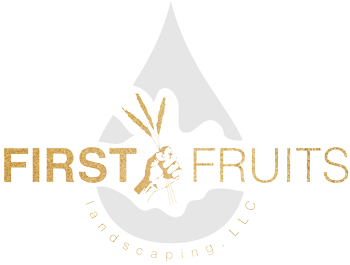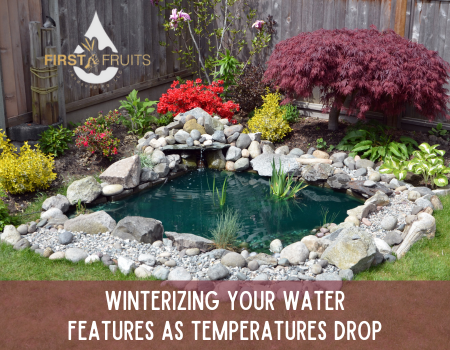As winter approaches and freezing temperatures settle in at night, you may be left worrying about the water features within your gardens and landscapes. While these elements add a touch of tranquility to your outdoor space, they also require special attention as temperatures start to drop. While these features create a tranquil escape and extension of your home for you to enjoy in warmer months, it’s now time to start preparing them for the winter so they can be enjoyed again come Spring.
Risks of Not Winterizing Your Water Features
- Freezing and Expansion: Water expands when it freezes, and this can wreak havoc on your water feature. Standing water in pipes, pumps, and basins can freeze, causing these components to crack or in extreme cases even burst.
- Damage to Pump Systems: The heart of many water features is the pump system. Freezing temperatures can cause water inside the pump and tubing to freeze, leading to damage. Additionally, ice can put extra stress on pump components, potentially causing malfunctions.
- Impact on Aquatic Life: If your water feature is home to fish or aquatic plants, freezing conditions can pose a threat to their well-being and even their life. The ice layer may limit oxygen exchange, and extreme cold can be detrimental to the health of fish and plants.
- Aesthetic and Structural Damage: Ice can be heavy, and the weight of accumulated ice on the surface of water features can cause structural damage. This damage not only affects the aesthetics but can also lead to costly repairs.
Winterization Tips for Water Features
While the importance of water features isn’t in question, it can often seem overwhelming when it comes to figuring out where to start. The “how” behind winterizing can vary pending on the water feature you are hoping to winterize. Here are a few tips to ensure your water features are winterized and kept in great condition until Spring comes around.
Ponds
- Install a pond heater or de-icer to keep a portion of the water surface ice-free, allowing for oxygen exchange.
- Remove debris from the pond to prevent organic matter from decomposing and releasing harmful gas.
- Install a pond net to catch falling leaves and prevent them from settling at the bottom of the pond.
Fountains
- Consider draining the fountain and storing the pump indoors if feasible.
- If your fountain has a basin, ensure it is completely emptied to prevent water from freezing and damaging the structure.
- Cover the fountain to protect it from ice accumulation and debris.
Waterfalls
- Reduce the flow of water in the waterfall to minimize the risk of freezing.
- If possible, redirect the water to create a continuous flow that is less prone to freezing.
- Insulate exposed pipes and components to prevent freezing.
Pump Systems
- Remove the pump from the water feature and store it indoors.
- Thoroughly clean the pump to remove any debris that could damage it during winter storage.
- If removing the pump is not feasible, consider using a submersible de-icer to prevent freezing.
Winterizing your water features is a necessary evil, but with practice, winterizing your outdoor spaces will become a part of your routing yard maintenance. Remember, a little preparation goes a long way in preserving the serenity and allure of your outdoor space during the colder months, and once Spring rolls around and your yard comes alive, the trickling of water features will only add to your home’s beauty. Are you in need of regular yard maintenance, new irrigation systems, or help creating your own backyard oasis? Contact us today!

